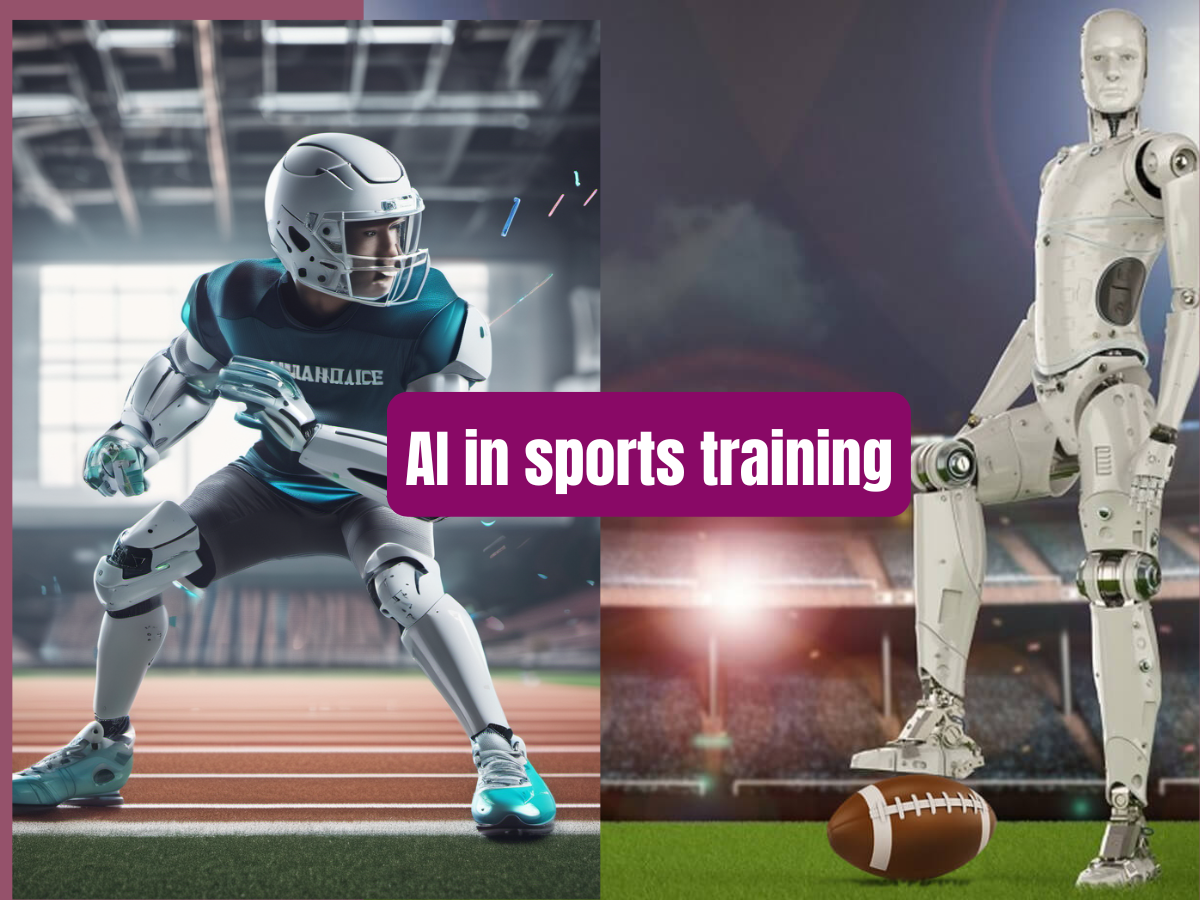The sporting landscape of our time is full of representatives of high competing levels, and very often the score may be within a hair’s breadth. Therefore, athletes and trainers are always seeking an advantage for their team. AI is transforming the landscape of sports training. By utilizing AI’s capabilities, athletes can enhance their performance, prevent injuries, and unlock their full potential as humans. In the following article, we will be able to traverse different developments in AI-powered sports training and bear their uses, advantages, and implications for the future in mind.
The Emergence of AI in Sports/Sports as a Form of Training.
The AI interference in sports training is not just science fiction but a literal reality we are witnessing today. People from all over the world are turning to AI tools for training. With new tools such as data analytics and machine learning algorithms becoming available, athletes’ coaches and trainers now have a look inside the performance metrics, biomechanics of movements, and physiological responses of their athletes that they have never been able to get before.
Understanding the Role of AI in Athletic Performance Optimization
Establishing the position of AI and its role in sporting performance perfection
One of the primary goals of AI-driven sports training is to extract useful information from a massive mountain of data that is presented in real-time and offer actionable insights to athletes and sports coaches to push performance to the very limits. AI systems can use machine learning algorithms to identify unique trends, plot aberrations, and provide personalized learning pathways based on the learner’s capabilities. Through utilizing machine learning algorithms, AI systems can reveal unique trends and plot aberrations, as well as provide personalized learning pathways based on learner capabilities. It does not matter if it’s about personalizing training loads, fine-tuning techniques, or preventing disease. Those are, however, AI-enabled tasks to aid athletes in their training and make them smarter and more rejuvenated.
Breaking Down AI-Powered Training Techniques
Virtual Reality Training Simulations
The fusion of VR and AI algorithms is reimagining the approach providers and clients take when it comes to exercising. VR virtual reality training facilities can put the player in a 3D virtual world-like experience so advanced that they can practice and develop their skills in a safe and risk-free environment. The integration of engaging games with enhanced tactical insight through VR training simulations elevates skill development. Additionally, VR’s gamified training offers the benefit of enhanced decision-making in high-pressure situations.
Biomechanical Analysis and Motion Tracking
Sports scientists use biomechanical analysis and motion tracking to evaluate athletes’ performance. Artificial intelligence has enabled the design of sophisticated biomechanical analytics confirming such features as the functioning of muscular-skeletal systems in extreme conditions. The AI system will collect and analyze the biomechanical data via the use of sensors and motion devices. It will find the inefficiencies in movements, the asymmetries, and the possibility of injuries. Unfortunately, coaches can use knowledge to develop personalized training regimes that maximize movement mechanics and reduce athlete injury risks.
Benefits of AI in Sports Training
Artificial intelligence (AI) has emerged as a game-changer in the realm of sports training, offering a myriad of benefits to athletes, coaches, and teams alike. Here are some of the key advantages:
Personalized Training Programs:
AI algorithms analyze vast amounts of data, including athletes’ performance metrics, biomechanics, and physiological responses, to tailor training programs to individual needs. This personalized approach maximizes efficiency and effectiveness, optimizing each athlete’s potential.
Performance Optimization:
By harnessing AI-driven tools and techniques, coaches can optimize athletes’ performance in various aspects, such as technique refinement, tactical awareness, and physical conditioning. AI provides real-time feedback and insights, enabling athletes to make continuous improvements.
Injury Prevention:
AI-powered biomechanical analysis tools detect movement inefficiencies and potential injury risks, allowing coaches to intervene proactively. By identifying and addressing issues early on, AI helps mitigate the risk of injuries, keeping athletes healthier and prolonging their careers.
Enhanced Decision-Making:
Virtual reality (VR) training simulations, powered by AI, offer athletes a realistic and immersive environment to practice decision-making under pressure. This enhances cognitive skills, strategic thinking, and adaptability, crucial for success in competitive sports.
Data-Driven Insights:
AI algorithms analyze vast datasets to uncover patterns, trends, and correlations that may not be apparent to the human eye. Coaches can leverage these insights to make informed decisions regarding training strategies, game tactics, and player development.
Predictive Analytics:
AI models can forecast athletes’ performance outcomes with remarkable accuracy, aiding coaches in strategic planning and preparation. Predictive analytics enable teams to anticipate opponents’ strategies, adjust game plans accordingly, and gain a competitive edge.
Efficient talent identification:
AI-driven talent identification systems analyze player performance data to identify promising athletes and talent potential early on. This streamlines the scouting process, allowing teams to discover and nurture talent more effectively.
Remote Coaching and Monitoring:
With the advent of wearable devices and remote training platforms powered by AI, coaches can monitor athletes’ performance and progress from anywhere in the world. This flexibility facilitates remote coaching and enables athletes to access training resources regardless of their location.
Continuous Innovation:
AI fosters a culture of innovation and experimentation in sports training, driving the development of new technologies and methodologies. By embracing AI, teams, and organizations can stay at the forefront of advancements in sports science and performance optimization.
